Known as the “Land of Kings,” Rajasthan is a dynamic state rich in culture, history, and scenic beauty. Rajasthan is one of the most well-liked travel destinations in India because of its imposing forts, expansive palaces, vibrant festivals, and friendly locals. Rajasthan offers an experience unlike any other, whether you’re exploring the golden sands of the Thar Desert or taking in the exquisite grandeur of centuries-old temples. This blog will walk you through some of Rajasthan’s most magical tourist destinations, ideal for those looking for adventure, history, or just the allure of India’s regal past.
Jaipur: The Pink City
The capital of Rajasthan, Jaipur, is a city that skilfully combines modern energy with old-world elegance. Jaipur, sometimes referred to as the “Pink City” because of its characteristically pink buildings, is a city of opulent palaces, vibrant bazaars, and regal architecture.
Amber Fort: – A magnificent example of Rajput construction, Amber Fort is perched on a hill overlooking Maota Lake. One of Jaipur’s main attractions is the fort, which boasts expansive courtyards, elaborate mirror work, and breathtaking views. Don’t miss the majestic elephant ride that ascends to the fort—akin to that of the maharajas.
Hawa Mahal: One of the most recognisable sites in Jaipur is the “Palace of Winds.” With its 953 tiny windows, or jharokhas, this five-story structure was intended to make it possible for royal ladies to attend street celebrations covertly. It’s a photographer’s dream because of the elaborate latticework and pink façade.
City Palace: Situated near the centre of Jaipur, City Palace is an expansive complex of gardens, courtyards, and buildings that showcase the combination of Mughal and Rajput architectural styles. The palace is home to museums that showcase royal armour, relics, and weaponry, providing visitors with a look into the opulence of Rajasthan’s past.
Jantar Mantar: UNESCO has designated Jantar Mantar, an astronomical observatory constructed by Maharaja Sawai Jai Singh II, as a World Heritage Site. It displays the scientific achievements of ancient India and includes the largest stone sundial in the world, along with other apparatus for tracking celestial bodies and measuring time.
Jaipur is particularly well-known for its colorful bazaars, where you may purchase jewelry, textiles, traditional handicrafts, and other items. Because of its vibrant atmosphere and extensive historical legacy, Jaipur is a must-see location in Rajasthan.
Table of Contents
Udaipur: The City of Lakes
Udaipur, sometimes known as the “Venice of the East,” is well known for its stunning lakes, palaces, and sultry atmosphere. One of India’s most lovely cities is Udaipur, which is surrounded by the Aravalli Hills and has an idyllic environment.
Lake Pichola :- Founded in 1362 AD, this man-made lake serves as the focal point of Udaipur. Stunning views of the City Palace, Jag Mandir, and the famous Lake Palace—which seems to float on the water—can be had from a boat trip on Lake Pichola. This is a memorable experience because of the calm ambiance, particularly at sunset.
City Palace Udaipur :- The City Palace is a stunning complex of palaces, courtyards, and gardens that overlooks Lake Pichola. The palace, which was constructed over 400 years by multiple emperors, combines Mughal and Rajasthani architectural styles. It’s a highlight of Udaipur because of the elaborate peacock mosaics, mirrored walls, and expansive views of the lake.
Saheliyon Ki Bari :- Maharana Sangram Singh constructed this “Garden of the Maidens” for the ladies of the royal family. The park offers a peaceful respite from the bustle of the city with its marble pavilions, fountains, lotus pools, and lush vegetation.
Lake Fateh Sagar :- Fateh Sagar Lake, another stunning lake in Udaipur, is a well-liked location for boating and picnics. The Aravalli Hills encircle the lake, which provides breathtaking vistas, especially in the monsoon season when the surrounding area turns a vibrant green.
Because of its historical significance and romantic appeal, Udaipur is a great place for honeymooners, history buffs, and anybody looking for a quiet getaway.
Jodhpur: The Blue City
Jodhpur, the second-biggest city in Rajasthan, is renowned for the imposing Mehrangarh Fort and its blue-painted homes. Travelers find the city to be an interesting visit because of its dynamic culture, bustling bazaars, and ancient sites.
Mehrangarh Fort :- One of India’s biggest and most striking forts, Mehrangarh Fort rises magnificently above the city. Constructed in 1459 by Rao Jodha, the fort features large courtyards, museums displaying royal artifacts, and mansions with elaborate sculptures. From the fort’s walls, the view of the azure city is truly amazing.
Jaswant Thada :- Maharaja Jaswant Singh II is remembered by the exquisite marble cenotaph known as Jaswant Thada, which is situated next to Miramar Fort. Known as the “Taj Mahal of Marwar,” this tranquil monument gives a calm respite from the bustle of the city and is encircled by gardens.
Umaid Bhawan Palace :- One of the biggest private homes in the world, Umaid Bhawan Palace is a representation of Jodhpur’s regal past. The palace has been divided into two sections: one is now a posh hotel, while the other is a museum dedicated to the royal family’s past. The palace’s opulence is enhanced by the lush gardens and Art Deco architecture.
Gardens of Mandara :- Mandore, formerly the capital of the Marwar area, is renowned for its ancient gardens and temples. The cenotaphs of Jodhpur’s previous rulers, which are housed in the gardens, are stunning examples of sculpture and architecture. Mandore Gardens is a must-see because of its historical significance and gorgeous flora.
Jodhpur is a city that lingers because of its fascinating culture and rich history, which offer a distinctive fusion of the old and the present.

Jaisalmer: The Golden City
Nestled in the middle of the Thar Desert, Jaisalmer is renowned for its architecture made of golden sandstone and its breathtaking views of the desert. The city is a well-liked travel destination for people looking for adventure and cultural experiences because of its isolated location, which heightens its ethereal charm.
Jaisalmer Fort :- Jaisalmer Fort is a “living fort,” home to around 25% of the city’s population, in contrast to the majority of forts in India. The fort, constructed by Rawal Jaisal in 1156 AD, has a golden color due to the yellow sandstone used in its construction. The havelis, temples, and palaces within the fort are all exquisitely carved and exquisitely kept.
Sam Sand Dunes :- The Sam Sand Dunes, roughly 40 km from Jaisalmer, are a well-liked location for taking in the grandeur of the Thar Desert. Under the starry sky, guests can take part in traditional events, camel rides, and desert safaris. This location hosts the yearly Desert Festival, which features Rajasthani traditional dance, music, and handicrafts.
Patwon Ki Haveli :- This five-haveli cluster is among the most intricately carved and exquisite in all of Jaisalmer. Rich trader Guman Chand Patwa constructed the havelis, which are adorned with exquisite frescoes and elaborate brickwork. Every haveli has a unique style that reflects the wealth of Jaisalmer’s merchant elite.
Gadisar Lake :- Gadisar Lake, an artificial reservoir constructed in the fourteenth century by Maharawal Gadsi Singh, served as the primary water supply for the city. The lake is a serene place for a stroll in the morning or evening because it is surrounded by temples, shrines, and ghats. The lake’s allure is enhanced by the migratory birds that visit it in the winter.
The combination of Jaisalmer’s golden architecture and desert adventures makes for a singular experience that perfectly encapsulates the untamed beauty of Rajasthan.
Pushkar: The Spiritual Oasis
One of India’s oldest cities, Pushkar has deep spiritual importance. Tucked away near the holy Pushkar Lake, this little village is well-known for its markets, ghats, and temples. The spiritual atmosphere of Pushkar draws both pilgrims and hikers who are interested in local culture.
Pushkar Lake :- It is said that Lord Shiva’s tears formed the sacred Pushkar Lake. Encircled by fifty-two ghats, the lake is a popular Hindu pilgrimage destination, with the belief that a plunge in its waters can atone for sins. A sense of serenity and spirituality can be found in the calm atmosphere, particularly during the early morning and evening aartis.
Brahma Temple :- The world’s sole Brahma Temple, honoring Lord Brahma, the universe’s creator, is located in Pushkar. The two most recognizable aspects of the temple are the red spire and the four-headed Brahma figure. Thousands of devotees attend Pushkar during the Kartik Purnima festival, which brings the temple exceptionally packed.
Temple of Savitri :- The Savitri Temple honors Goddess Savitri, the spouse of Lord Brahma, and is perched atop a hill. The long but worthwhile ascent to the temple rewards with expansive vistas of Pushkar and the surrounding desert region. The temple is a tranquil haven away from the busy town underneath it.
Pushkar Camel Festival :- One of the biggest livestock fairs in the world is the Pushkar Camel Fair, which takes place in November each year. Thousands of people attend the fair to see the colorful spectacle of camel races, ethnic dances, and traditional
Of course! Let’s carry on with the blog and complete the descriptions of the remaining locations to see during the cultural activities in Rajasthan. The fair is a riot of color, with visitors partaking in diverse activities including hot air ballooning, local craftsmen exhibiting their wares, and camels dressed in colorful costumes. In addition to being a major religious celebration, the fair culminates on Kartik Purnima with a holy bath in Pushkar Lake.
Pushkar is a must-see location in Rajasthan because of its distinctive fusion of spirituality, culture, and colorful festivals. There is something for everyone in Pushkar, be it a photography enthusiast, a spiritual seeker, or just someone wanting to immerse themselves in real Rajasthani culture.
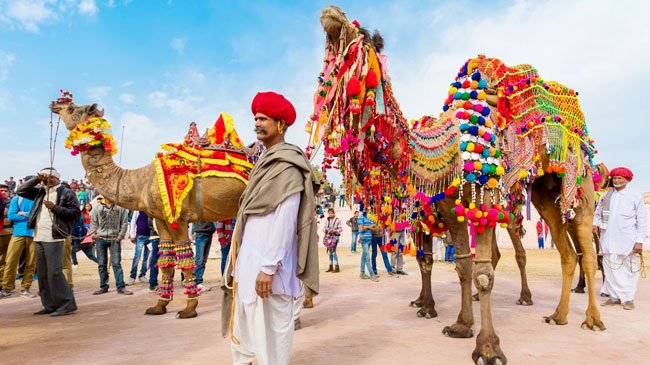
Bikaner: The Desert Jewel
Bikaner, a city in northern Rajasthan, is well-known for its magnificent forts, camel breeding facilities, and mouthwatering confections. Bikaner, which is frequently eclipsed by its more well-known neighbors, provides a genuine look into Rajasthan’s desert lifestyle.
Junagarh Fort :- Junagarh Fort was never overrun, in contrast to many other forts in Rajasthan. Raja Rai Singh constructed the magnificent fort, which has palaces, courtyards, and temples, in the late 16th century. The fort’s walls are covered in exquisite murals, mirror work, and elaborate sculptures that combine Rajput and Mughal architectural elements.
Karni Mata Temple :- Karni Mata Temple, which is around 30 kilometers from Bikaner in Deshnok, is well-known for its colony of rats, which are revered. The “kabbas,” or rats, are thought to represent the reincarnations of Karni Mata’s followers. One of Rajasthan’s most fascinating tourist destinations is the temple, with its distinctive architecture and customs.
National Camel Research Center :- Bikaner is referred to as “Camel Country,” and anyone interested in learning more about these resilient desert animals should definitely stop by the National Research Centre on Camel. In addition to exploring the camel museum and enjoying camel rides, guests can sample tea and ice cream made from camel milk.
Lalgarh Palace :- Lalgarh Palace, constructed by Maharaja Ganga Singh in the early 1900s, is a stunning illustration of Indo-Saracenic architecture. The palace, which is currently a heritage hotel, has elaborate masonry, expansive hallways, and lush gardens. The palace also has a museum with pictures and artifacts belonging to the royal family.
Bikaner is the perfect destination for travelers who want to venture off the beaten road because of its rich history and lesser-known sights, which provide a fresh perspective on Rajasthan’s desert heritage.
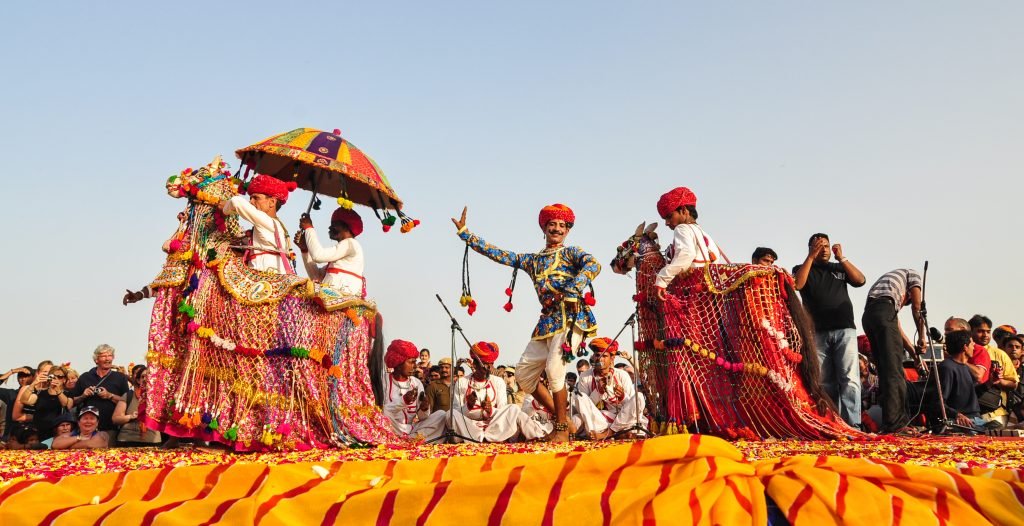
Mount Abu: The Hill Station of Rajasthan
The lone hill station in Rajasthan, Mount Abu, provides a welcome break from the state’s parched surroundings. Located in the Aravalli Range, Mount Abu is a well-liked getaway for those who enjoy the outdoors due to its temperate climate, abundant vegetation, and peaceful lakes.
The Temples of Dilwara :- A collection of Jain temples known for their exquisite marble architecture are called the Dilwara Temples. Constructed throughout the 11th and 13th centuries, these temples exhibit the craftsmanship of the ancient artisans with their elaborate carvings and elaborate pillars. The temples are architectural marvels because of the contrast between their modest façade and lavish interiors.
Kakki Lake :- Nakki Lake was supposedly excavated by gods with their nails (nakk). The lake, which has hills all around it, is a well-liked location for boating, picnics, and leisurely strolls. Nearby Toad Rock, a sizable rock formation that resembles a toad, is a well-liked viewpoint with breathtaking views of the lake and surroundings.
Shikhar Guru :- Offering sweeping views of the surrounding hills and valleys, Guru Shikhar is the highest peak in the Aravalli Range. The Guru Dattatreya Temple, devoted to the Hindu deity Dattatreya, is located atop the mountain. Nature lovers will love Guru Shikhar’s peaceful ambiance and refreshing breeze.
Sunset Point :- Sunset Point, which is southwest of Nakki Lake, provides a breathtaking view of the sun sinking over the hills. Every evening, tourists are drawn in by the captivating experience created by the rich foliage and the vivid colors of the sky.
Mount Abu is a well-liked travel destination for both visitors and pilgrims because of its temperate climate, visual beauty, and spiritual significance. Mount Abu provides a tranquil respite from the heat of the plains, whether you’re touring the historic temples, taking a boat ride on Nakki Lake, or just taking in the mountain air.
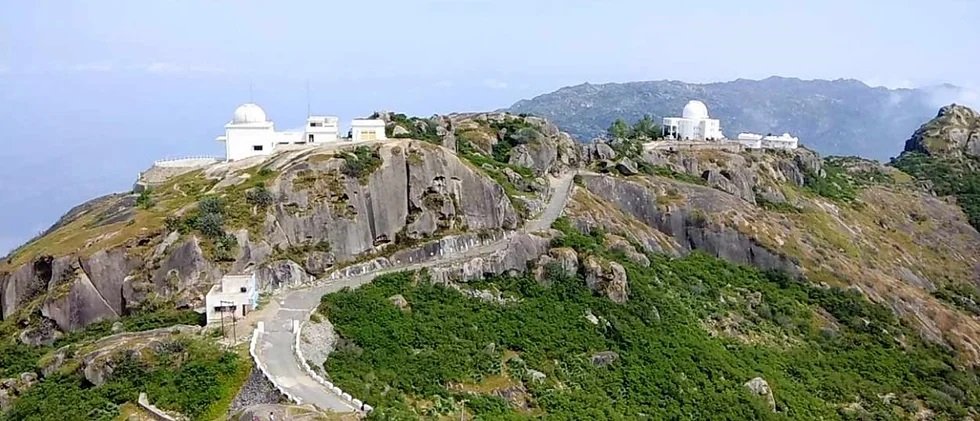
Ranthambore: The Land of the Tigers
Situated in the Sawai Madhopur district of Rajasthan, Ranthambore National Park is widely recognized as one of India’s most prestigious wildlife sanctuaries. Ranthambore, which is well-known for having a large population of Bengal tigers, provides photographers and wildlife enthusiasts with an exciting experience.
Tiger Safari :- One of the best locations in India to see the elusive Bengal tiger in its native environment is Ranthambore. The park is split up into various zones, each of which has a different forest, lake, and grassland landscape. The park is home to several bird species, deer, sloth bears, and leopards in addition to tigers. When the tigers are most active, which is in the early morning or late afternoon, these are the ideal times to see them.
The Fort of Ranthambore :- 10th-century Ranthambore Fort is a UNESCO World Heritage monument situated atop a hill inside the national park. As a significant component of Rajasthan’s past, the fort has seen numerous fights. A satisfying experience for both history historians and environment lovers, the hike to the fort gives panoramic views of the surrounding jungle.
Padam Talao :- The largest lake in Ranthambore National Park, Padam Talao is a great place to see wildlife, particularly in the dry season when animals gather here for water. A famous hunting lodge with breathtaking views of the lake and surrounding forest is located near the lake. It is known as the Jogi Mahal.
Kachhida Valley :- Kachida Valley, which sits on the edge of the park, is well-known for its varied species and picturesque surroundings. Leopard sightings are more frequent in this area than in other parts of the park, making it an excellent spot to watch them. The valley is a distinctive feature of Ranthambore’s scenery due to its rugged surface and abundant vegetation.
For those who are interested in India’s abundant biodiversity, Ranthambore is a must-visit location because of its unique combination of history, wildlife, and natural beauty. Ranthambore provides an amazing experience, whether you choose to explore the ancient fort or go on a tiger safari.
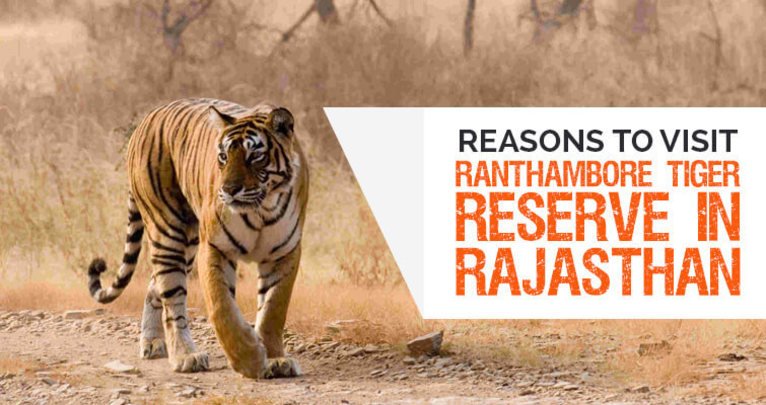
Ajmer: A City of Faith and History
Tucked up in the hills of Aravalli, the city of Ajmer is rich in religious and historical significance. Ajmer, which is well-known for the holy Ajmer Sharif Dargah, draws travelers and pilgrims from all over the world.
Ajmer Sharif Dargah :- One of the most significant pilgrimage sites in India is the grave of the Sufi saint Khwaja Moinuddin Chishti, located in Ajmer Sharif Dargah. The dargah draws followers of all religions since it is a representation of social harmony. Thousands of pilgrims travel to Ajmer for the annual Urs festival, which honors the saint’s death anniversary, in hopes of receiving graces.
Adhai Din Ka Jhonpra: Qutb-ud-din Aibak transformed Adhai Din Ka Jhonpra, which was once a Sanskrit college, into a mosque in 1199 AD. The name of the mosque, which translates to “shed of two-and-a-half days,” alludes to the urban legend that it was constructed in just two days and a half. With its elaborate calligraphy and exquisitely carved pillars, the building is a superb illustration of early Indo-Islamic architecture.
Ana Sagar Lake :- Anaji Chauhan constructed the lovely artificial lake Ana Sagar Lake in the twelfth century, and it provides breathtaking vistas of the Aravalli highlands. The lake is a well-liked location for boating and picnics, especially in the evening when the surroundings are glowing golden. The lake’s allure is enhanced by the adjacent Daulat Bagh, an Emperor Jahangir garden.
Taragarh Fort :- One of the oldest forts in India, Taragarh Fort overlooks Ajmer and was constructed in the seventh century. The fort is well-known for its ancient tunnels, which were originally used as escape routes during sieges, and for its expansive views of the city. History buffs should not miss the fort because of its untamed beauty and historical relevance.
Because of its spiritual significance and rich history, Ajmer offers a singular experience that combines heritage, culture, and religion. Ajmer offers an in-depth and enriching trip into India’s past, whether you choose to explore the ancient fort or pay homage to the dargah.
Chittorgarh: The Epitome of Rajput Valor
Chittorgarh is a city steeped in history, renowned for its enormous fort and stories of Rajput valor. The city is a popular tourist destination in Rajasthan because of its rich history, which bears witness to the bravery and selflessness of its kings.
Chittorgarh Fort The largest fort in India, Chittorgarh Fort, is 700 acres in size and is recognized as a UNESCO World Heritage site. The fort, which has withstood three significant sieges, is a representation of Rajput pride and bravery. Highlights of the fort are the stunning Rani Padmini’s Palace, Kirti Stambh, Rana Kumbha Palace, and Vijay Stambh (Victory Tower). The fort is also well-known for the Jauhar that Rani Padmini and the courtesans performed to defend their honor during Alauddin Khilji’s siege of the fort. A visit to Chittorgarh Fort is a profoundly touching experience, capturing the unwavering spirit of the Rajputs through the tales of valor and sacrifice.
Vijay Stambh :- Standing tall as a testament to Rana Kumbha’s victory against the armies of Malwa and Gujarat is the Vijay Stambh, also known as the Victory Tower. The tower is a masterpiece of architecture, its depictions of Hindu deities delicately carved. After completing the 157 steps to the summit, visitors are rewarded with expansive views of the fort and the surroundings.
Rani Padmini’s Palace :- Rani Padmini’s Palace, which is part of the fort complex, is a beautiful and legendary location. It is believed that Alauddin Khilji saw the queen’s reflection in the palace, which was encircled by a lotus pool, which sparked the historic siege of Chittorgarh. The palace is a moving destination for tourists because of its calm surroundings, which contrast with the tragic past it bears.
Meera Temple :- The Meera Temple, which honors the saint-poetess Meera Bai, a devotee of Lord Krishna, is a stunning illustration of Rajput building design. The temple is a notable location for devotees and people interested in Rajasthan’s religious heritage because of its superb sculptures and meditative ambiance.
For anybody interested in the brave legacy of Rajasthan’s warrior culture, Chittorgarh is a must-visit location because of its immense history, inspiring legends, and stunning architecture. It feels as if you are traveling back in time to a time of honor, bravery, and unwavering pride when you explore Chittorgarh.

Conclusion: Rajasthan - A Timeless Journey
Rajasthan is a voyage through time rather than just a place to visit. Rajasthan has a varied tapestry of experiences to suit every type of traveler, from the magnificence of its palaces to the simplicity of its rural life. The state has a plethora of captivating attractions that captivate tourists due to its vibrant culture, rich history, and breathtaking landscapes.
Rajasthan offers experiences that will last a lifetime, whether you choose to explore the royal legacy of Jaipur, take in the romance of Udaipur’s lakes, see the golden sands of Jaisalmer, or go wild at Ranthambore. Not only do its buildings capture the essence of Rajasthan, but also its people’s tales, the vibrancy of its celebrations, and the enduring customs that cling to the region.
Rajasthan is a place that will fascinate the mind, arouse the soul, and inspire the heart for those wishing to delve deeply into India’s rich legacy. Every region of Rajasthan has a tale to tell, a mythology to impart, and an experience that is all its own, as you explore this enchanted country.
Thus, gather your belongings, aim for Rajasthan, and commence an adventure that will transport you through the annals of history, the vivacity of culture, and the splendor of nature. Rajasthan welcomes you with wide arms and a wealth of life-changing opportunities.
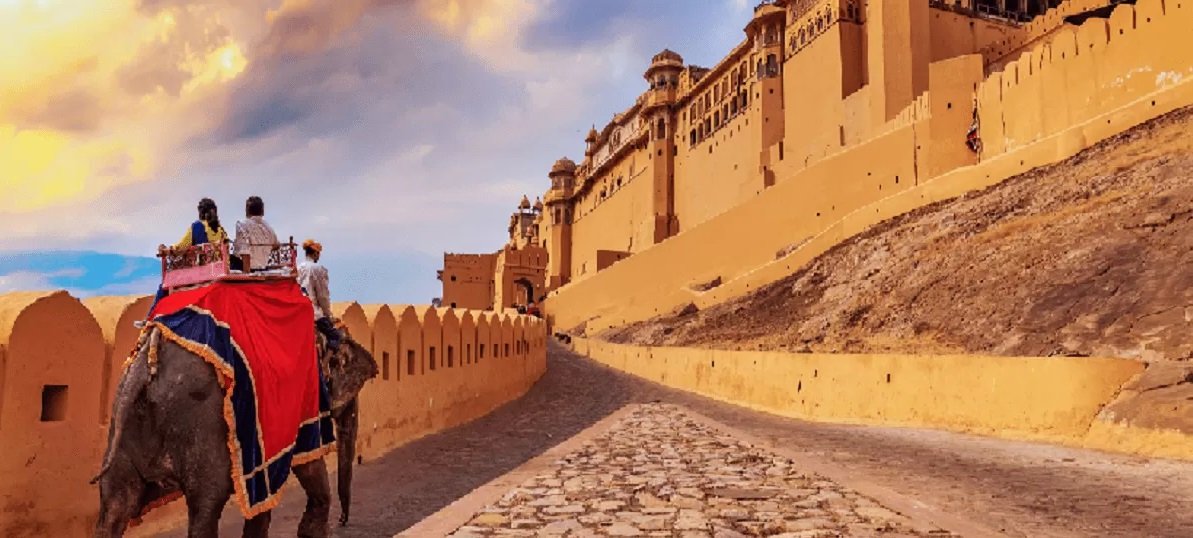







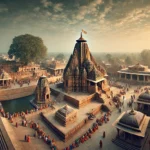
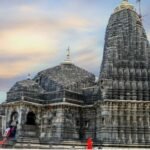

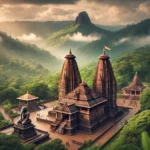
The blog on mybloggo.org about Rajasthan provides a captivating overview of the state’s rich cultural heritage, historical landmarks, and vibrant traditions. It explores Rajasthan’s royal history, iconic cities like Jaipur and Udaipur, and popular tourist attractions such as palaces and forts. The writing style is informative, making it a good read for travel enthusiasts, with helpful tips for adventurers and culture seekers alike. However, it could benefit from more detailed descriptions of lesser-known places or practical travel advice. Overall, it’s an engaging introduction to Rajasthan’s splendor.
The Rajasthan-focused blog on mybloggo.org provides an engaging look at the historical and cultural appeal of the state. For those who are not familiar with the area, it offers a good introduction by skillfully capturing the essence of Rajasthan’s palaces, forts, and colorful festivals. Still, the material maintains a high standard, with a greater emphasis on popular tourist destinations. For more experienced tourists, a deeper exploration of unusual places or local experiences might increase its value. All in all, it functions as a vibrant but somewhat general travel guide.